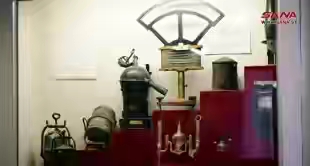Damascus (ST): Amidst the crowding and hustle and bustle of the Hamidiya and Harika markets in old Damascus, and in the middle of the road connecting them, there is a large door that takes you, since you set foot on its few steps, to a world of calm and tranquility, to enter the Museum of Medicine and Science “Bimaristan Al-Nouri”, which reflects the fragrant past and historical heritage of the region and is still a witness to the civilization and supremacy of the Syrians of various sciences.
The bimaristan, located in the center of old Damascus, west of the tailors’ market in the neighborhood of Sidi Amoud, to the southwest of the Umayyad Mosque, is one of three bimaristans built in Damascus by Nur al-Din al-Zanki in 1154 AD. It became famous as the first medical university in the East and was considered a unique architectural model in terms of its urban style and decoration.
According to the curator of the Bimaristan Al-Nouri Museum, Worood Ibrahim, it is considered one of the first hospitals in the world to treat mental and physical illnesses with music.
Ibrahim explained that in the old days the museum was a temple and later turned into a bimaristan that provides free medical services to the needy and poor patients.It accommodates about 1,500 beds. In 1900 AD, it turned into a school for girls and then into a commercial school. It was restored in 1976 and transformed into a Museum of Medicine and Science comprising three halls, “Medicine, Pharmacy and Science,” in which surgical instruments, drugs and herbal medicines that were used at that time to treat many diseases are displayed.
The museum halls contain a number of artifacts in the fields of medicine, pharmacy and treatment, including “a bowl of terror and a rare astronomical shirt dating back to the seventeenth century woven from linen used to draw toxins and sweat from the body and forms a shield to protect humans from diseases, astronomical tools, iris flowers and municipal lilies from which medicinal oils are extracted.”
K.Q.

